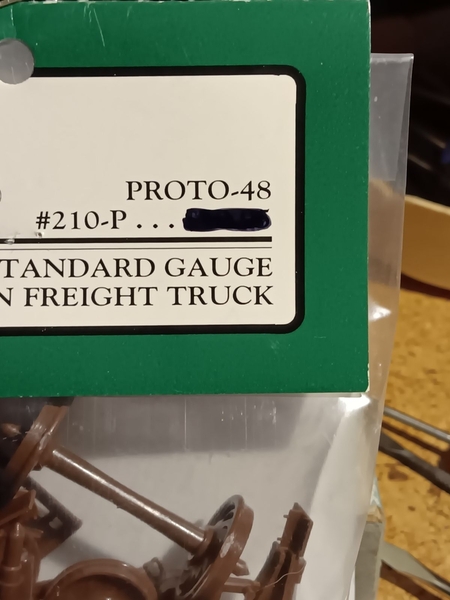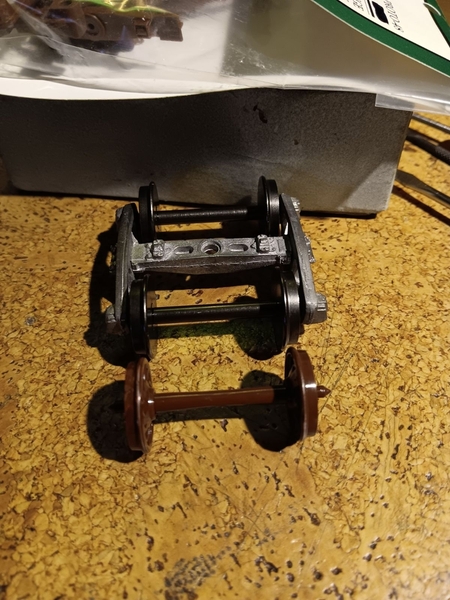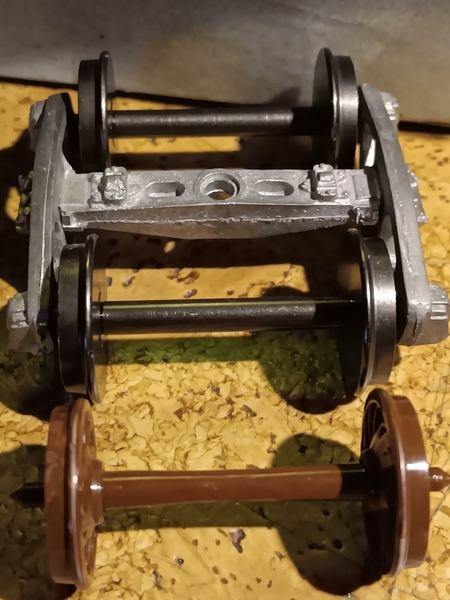I recently picked up a couple of these, just because I've always been curious:
...as you can see, it's clearly marked "Proto-48":
I assembled one of the wheels sets, but it looks like "regular" O scale 5' gauge. Here it is next to a truck with Intermountain wheels:
...and a closer look:
Although the wheels are certainly narrower, this a hair wide (I checked it against a NMRA wheel gauge).
There's only one way to assemble these, so it should be fail-safe in 4' 8 1/2" gauge.
So...what am I missing here? ![]()
Mark in (chilly today) Oregon












